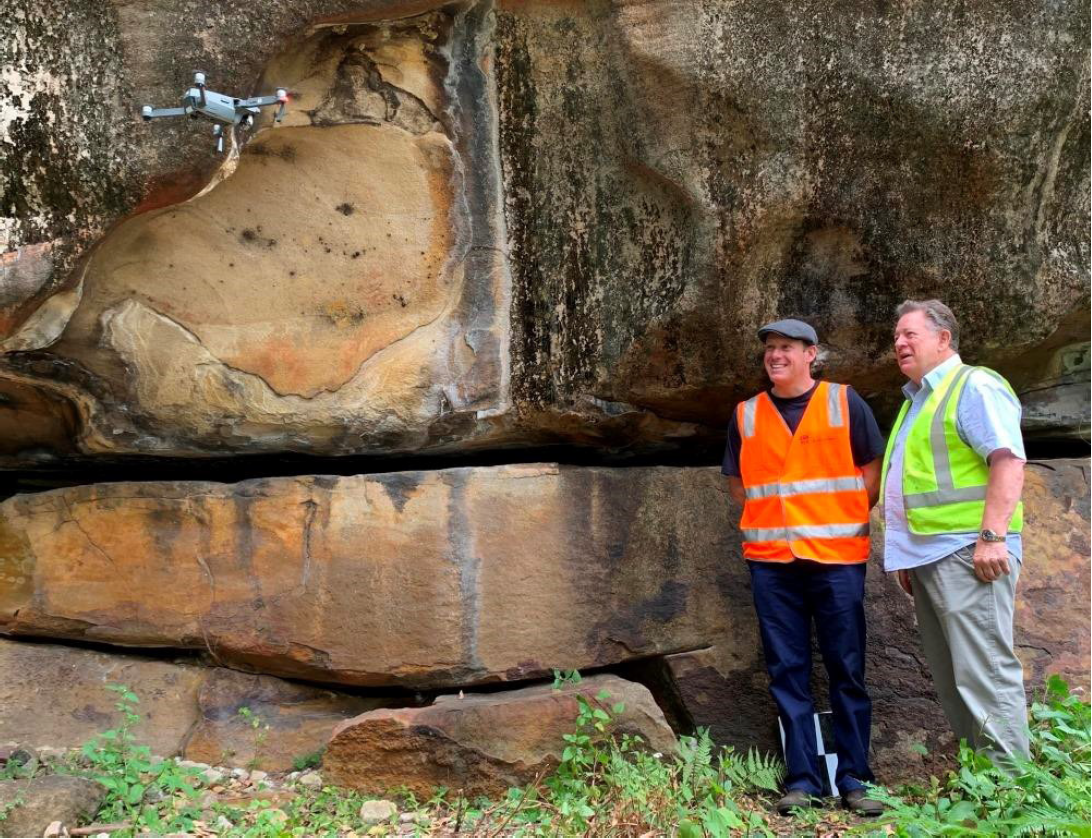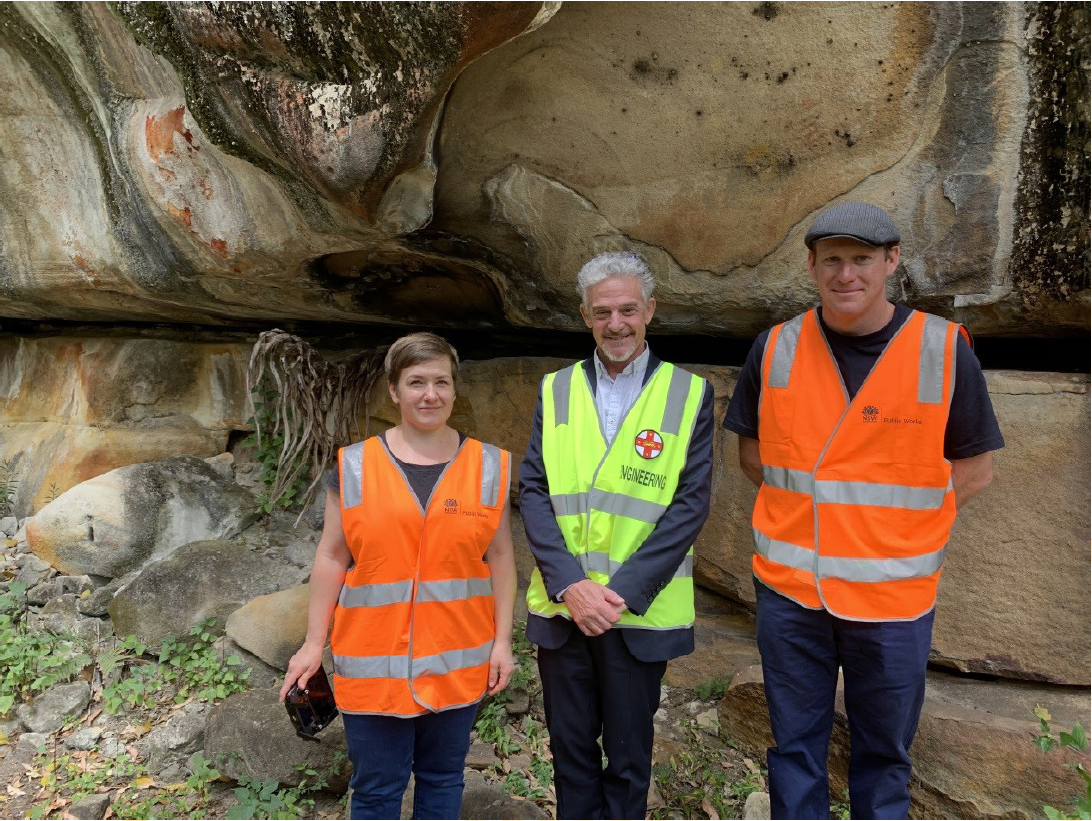
Digital Preservation of Hand Stencils
Guringai Country
Summary...
Hand stencils are produced by placing a hand against the rock surface and "spluttering" a mouthful of clay. Work undertaken in the Kimberly region has used drones to capture images of Kimberly Rock art non-destructively. The data can be converted into 3D models to allow for further investigation of the site and potentially identifying features that may be difficult to see with the naked eye. This is the first time this technology has been used outside of the Kimberly.Hand stencils, a common motif in Australian Indigenous art, are produced by placing a hand against the rock surface and ‘spluttering’ a mouthful of clay. Alterations of the clay colours could be produced by the addition of iron oxides or blood. Charcoal was added to consolidate it. Furthermore, it was possible, depending upon the clay type, to alter the colour of the clay by firing.
Aboriginal and Torres Strait Islander peoples are still at the forefront of science, maths and engineering so it is fitting that cutting edge scientific techniques are used to digitally preserve these sites for both future generations and research purposes.
Work undertaken in the Kimberly region in collaboration with the Kimberly Foundation, ANSTO and the University of Wollongong has used drones to capture images of Kimberly Rock art non-destructively. The data can be subsequently converted into 3D blocks to allow further investigation of the site and potentially identify features that are otherwise difficult to discern with the naked eye.
This technique was applied for the first time outside Kimberly region on hand stencils at Manly Vale. The scans and subsequent data analysis clearly identified at least five hand stencils. The small size and shape of some of the hand stencils present at this site suggest these are from young children. Digital enhancement of the images suggests there are more stencils which have been eroded by time.
These results are a timely reminder of the potential to preserve this important cultural heritage by using digital techniques.
Contact Details:
Brett Rowling(02) 9717 3111
brg@ansto.gov.au


